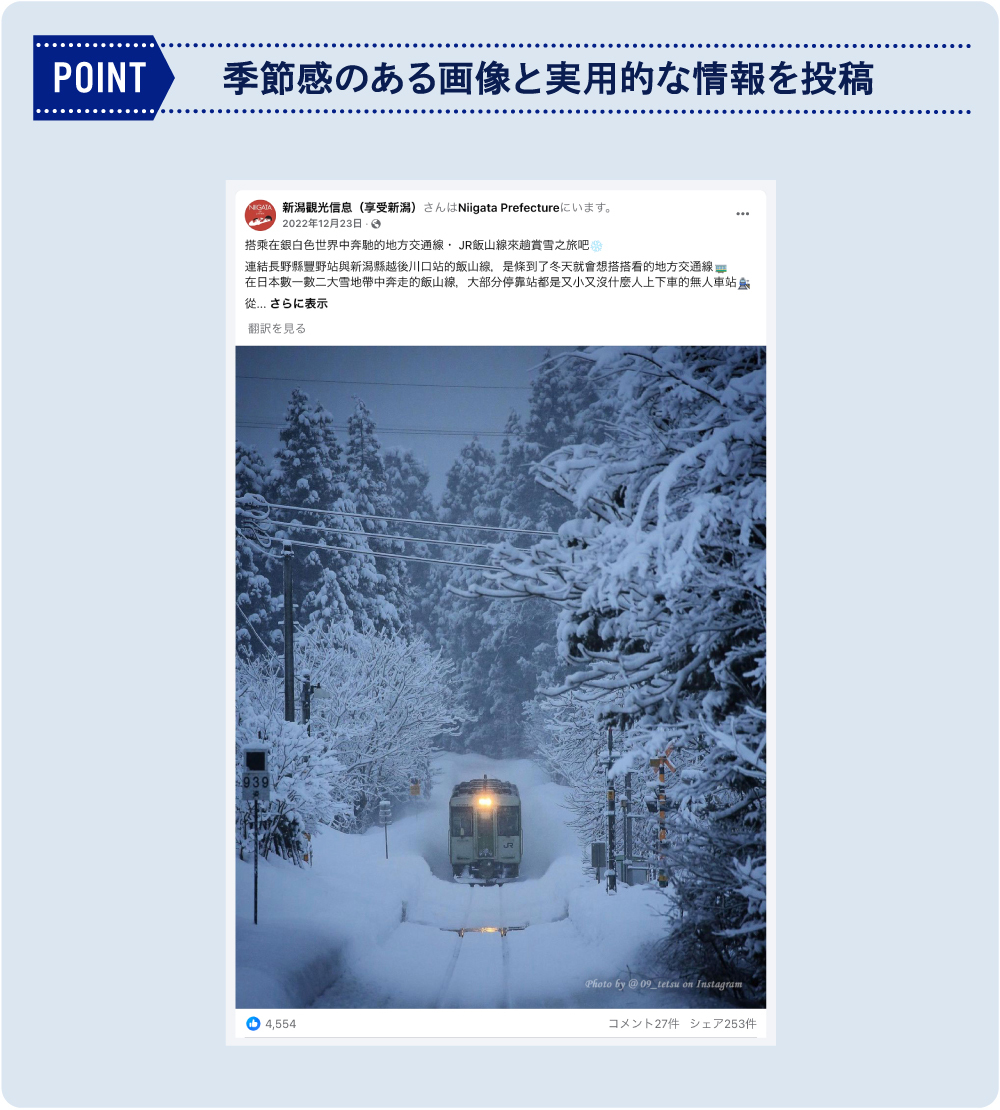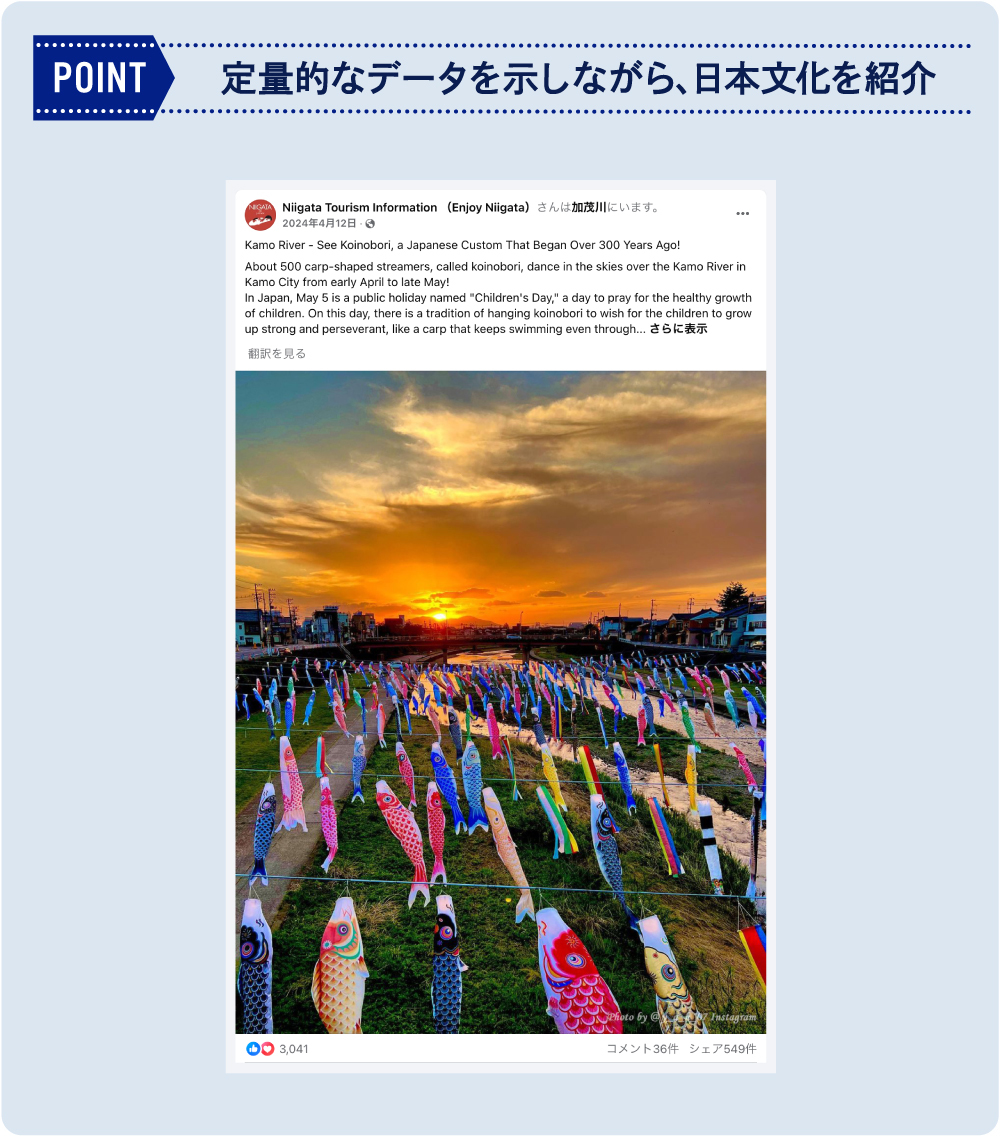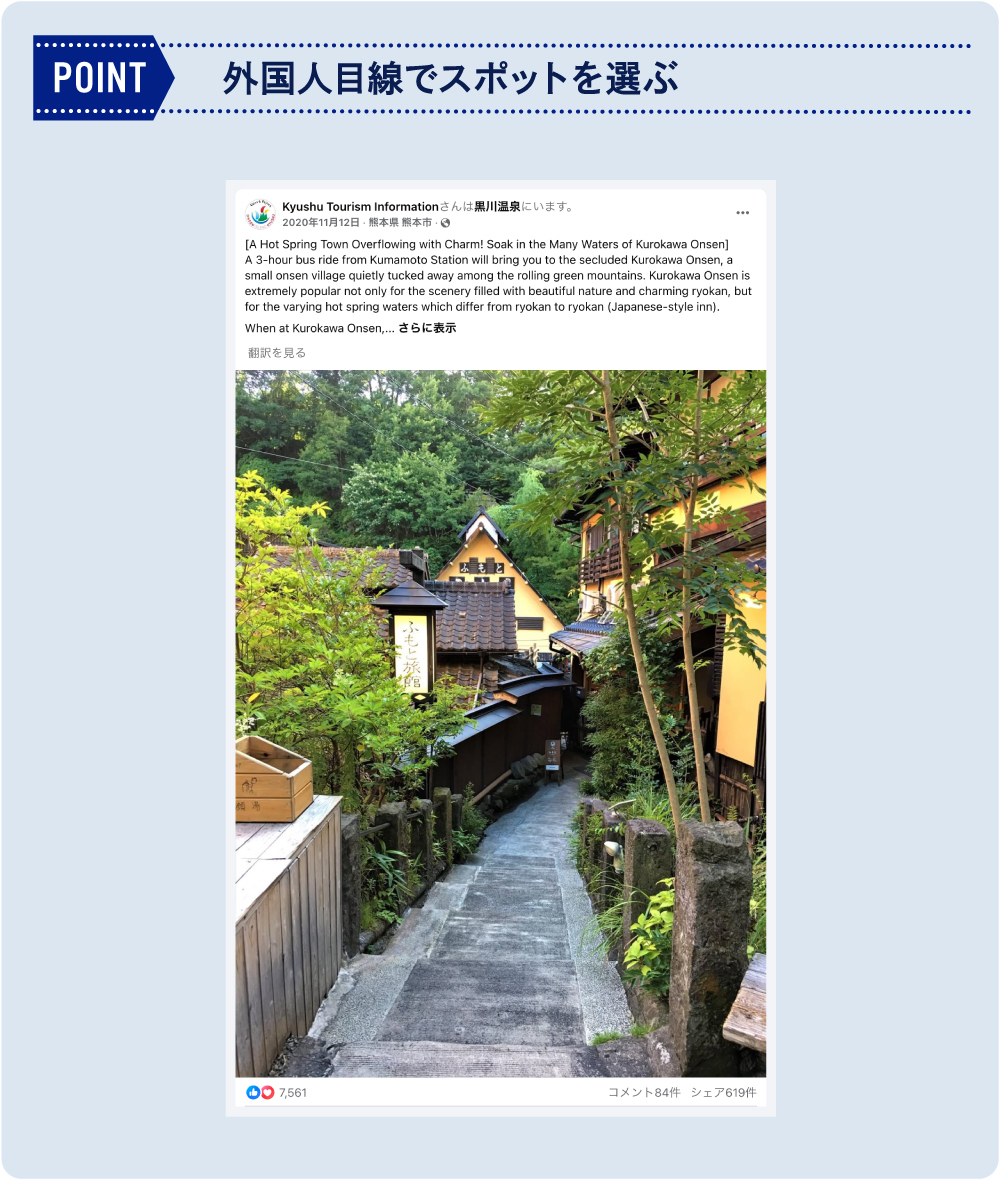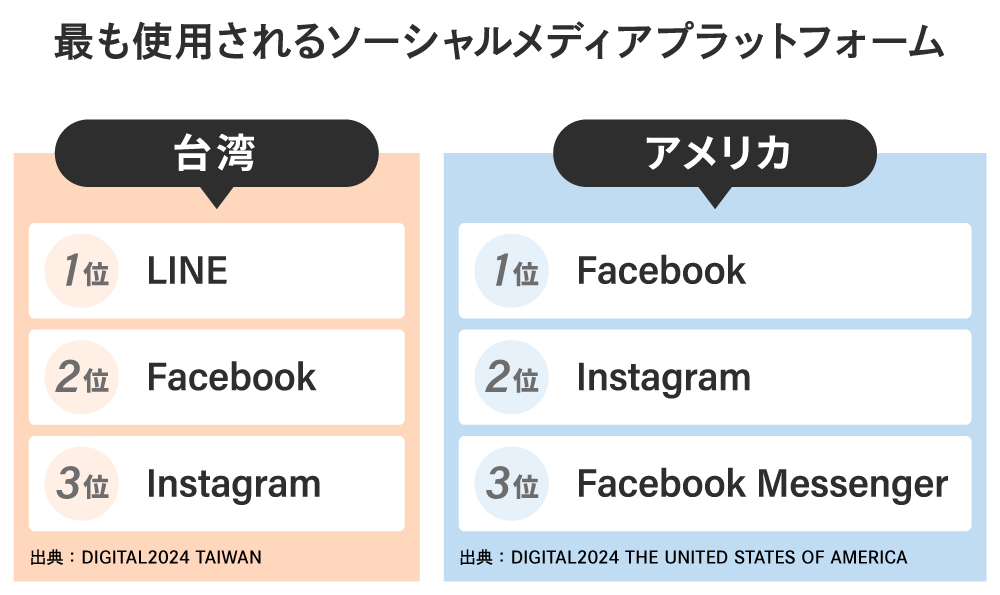Note: This website was automatically translated, so some terms or nuances may not be completely accurate.
What Attracts You to Japan? Learning from Successful Case Studies: Social Media Strategies for Inbound Tourists

Keisuke Chiba
D2C X Inc.

An inbound team at a company. Members are holding a meeting to attract foreign visitors to their amusement facility.
"The number of foreign visitors to Japan exceeded 36 million in 2024, and it looks like it will grow even more this year."
"Lately, I see a lot of travel posts on social media. We really need to focus on our social media strategy."
"What about accounts? Instagram and X are essential for domestic audiences. For overseas, should we add Facebook? Maybe we should create a YouTube channel too?"
"What about languages? English is a must, and we need Chinese too. Oh, and for Chinese, there's simplified and traditional versions—which should we use? We should also cover Korean. For non-English speakers, maybe we should post in Thai or other languages too."
"What about content ideas? Our facility's selling point is the beautiful ocean view from the observation deck, so we should take and post visually appealing photos. Beyond that... we'll need info on nearby hotels and inns, plus temples and shrines that might appeal to international visitors..."
"Let's just start and figure it out as we go."
...One month later
"Instagram isn't gaining followers, and my posts aren't getting many likes either."
"We've already posted all the photos we have of the facility, so we're running out of ideas."
"Posting in multiple languages is tough too."
"Social media efforts feel like a lot of work for little return. Should we just quit?"

<Table of Contents>
▼Diversifying and Fragmenting Inbound Tourism: SNS is the Main Travel Information Source
▼Facebook and Instagram are Essential for Information Outreach!?
▼Not Just "Instagrammable" Images: 4 Types of Posts That Go Viral with Foreigners
▼"Factoring Down" Things Increases Your Posting Ideas
▼Communication Starts from Responding to Comments and DMs
Diversifying and Fragmenting Inbound Tourism: SNS is the Main Source of Travel Information
I'm Chiba, Manager of the Inbound Division at D2C Inc. X. With a team of 26 including foreign staff, D2C Inc. X supports overseas marketing and social media strategies for companies and local governments. Earlier in this article, we covered common pitfalls in social media campaigns.
As the inbound tourism market expands, more companies and municipalities aim to "attract more foreign visitors by sharing information on SNS." However, we often see cases where, despite starting SNS outreach, efforts fail to gain traction and eventually fade away. This article shares key points for effective SNS communication and management, drawn from the expertise D2C Inc. has accumulated through daily operations.
First, let's discuss how foreign visitors are currently behaving in Japan. Traditionally, the "Golden Route" centered on Tokyo, Hakone, Mount Fuji, Nagoya, Kyoto, and Osaka was the most popular tourist path for visitors to Japan. Now, however, travelers are venturing beyond the "Golden Route" to various regional areas. While travel agencies used to handle all travel and accommodation arrangements, more people are now making their own plans.
Beyond simply visiting famous sights or shopping, there's a growing number of travelers prioritizing "experiences" like camping, glamping, and driving tours using rental cars. Led by JNTO (Japan National Tourism Organization), there's a movement to promote adventure tourism across Japan.
For example, they are promoting overseas activities like skiing and snowboarding in Hokkaido and Niigata, walking the Kumano Kodo pilgrimage routes, the Shikoku pilgrimage, and cycling around the Seto Inland Sea. Going forward, it is expected that touring regional areas and experiential travel will increase, leading to increasingly diverse and specialized needs among foreign visitors to Japan. As travel styles change, inbound tourists are actively seeking information, with web media and SNS becoming the primary sources for travel information.
One reason for the increased use of SNS when traveling in Japan is the ability to access niche, authentic information not found in guidebooks or pamphlets.
Facebook and Instagram are indispensable for information dissemination!?
When implementing inbound strategies targeting foreign visitors to Japan via SNS, the first step is to identify which web media and SNS platforms your target audience uses. Outside of China, Facebook and Instagram dominate SNS usage rates. Overseas users not only research information on Facebook but also post their own findings more frequently than in Japan. Rather than tackling multiple platforms simultaneously from the start, begin by managing the English version of Facebook, then expand to the English version of Instagram. One approach is to create English versions first, then gradually expand to other languages like Traditional Chinese. If you have a clear target audience of tourists from specific countries, you also need to research media usage rates in those countries, as they vary. For example, the most commonly used social media platforms for people from Taiwan and the United States are listed below.
Beyond Just "Instagrammable" Photos: 4 Posts That Trended with Foreigners
Here, we'll share key points to consider when posting tourism information on social media, using examples of overseas-targeted Facebook posts by D2C Inc. that went viral. This time, we'll highlight tips from accounts run by municipalities that share tourism content from various angles, focusing on strategies easily adaptable for corporate accounts.

This post about snow-viewing trips on the JR Iiyama Line was shared from Niigata Prefecture's official Facebook page. Targeted at audiences in Taiwan and Hong Kong, it garnered 4,555 likes! "Japan's four seasons" attract significant international attention. Many people from regions without distinct seasons, such as Southeast Asia, visit Japan seeking landscapes that evoke seasonal feelings. Japanese trains are also popular with overseas travelers. The key to this post's success was combining an image of a train running through a fantastical snowy landscape with practical information about the Iiyama Line, including where to board. This applies beyond municipal accounts: since Facebook posts tend to be read thoroughly, incorporating useful information is crucial.

This is an English-language post targeting Western and Australian audiences, introducing the carp streamers along the Kamo River in Niigata Prefecture. Foreigners are highly interested in Japanese culture. This post's text included specific numbers, such as "The Kamo River's carp streamers have a history of about 300 years, with 500 carp streamers swimming along the riverbank." Using quantitative data to clearly convey scale makes it easier for readers to visualize, often leading to greater engagement.

This post targeted audiences in Taiwan and Hong Kong, introducing the Great Cherry Tree at Isshigyo in Minamiaso Village, Kumamoto Prefecture. Japanese cherry blossoms enjoy high recognition overseas and are a popular topic on social media. This post featured images of the colorful contrast between cherry blossoms and rapeseed flowers—a sight rarely seen in other countries or regions—which went viral, garnering 10,000 likes! Scenes like this, uncommon overseas, tend to attract attention. This post also heightened interest by including specific details: the Isshigyo Grand Cherry Tree is 400 years old, stands 14 meters tall, and is best viewed from late March to early April.

Finally, a post about Kurokawa Onsen in Kumamoto Prefecture. Our foreign staff selected this spot, noting the interesting font on the ryokan sign and the nostalgic feel of old Japan conveyed by the stone pavement with its varied shades. Westerners, in particular, tend to appreciate historical context and stories. The post included the history of Kurokawa Onsen. This post garnered approximately 7,500 likes, was shared about 620 times, and received numerous images and comments from travelers who visited the location.
Breaking things down into factors increases your post ideas
When managing social media, it's essential to plan at least three months of posts in advance to avoid burning out quickly. Often, people focus intensely on finding content for each post—like "digging deep into facility details," "posting only photogenic images," or "sharing 4K or drone videos." This approach quickly exhausts your ideas.
To maintain consistent posting, it's crucial to break down the subject you're introducing. For example, with hotels or inns, beyond showing the exterior or room interiors, you can explore elements like the staff's dedication to kimono, the variety of tableware used for dishes, or the seasonal changes in garden plants. From there, you could easily create staff interview videos. Or, you could post about cherry blossom viewing alongside an image of fallen cherry leaves in the garden. Hints are everywhere in daily life. It's important not to get fixated on "Instagrammability," but to shift your perspective and connect everyday events to social media posts, fostering communication with international travelers.
Also, consider tailoring your content. People from Asia, like Korea and Taiwan, tend not to read long texts, while those from Western countries like the US and UK prefer stories. For the same topic, when targeting Asia, prepare more colorful, photogenic images and keep the text light. For Western audiences, consciously rewrite it to include substantial text, presenting it as something to read.
Communication arises from replying to comments and DMs
When managing social media, comments and DMs (direct messages) on posts come in daily. It's common to see cases where the social media manager doesn't respond due to lack of resources, or where the comment section is hidden altogether. This is a huge missed opportunity.
Comments and DMs offer a precious chance to hear travelers' genuine voices. They can reveal customer service challenges and lead to improvements. Even if language is a concern, showing you're responding can encourage visits or repeat visits. For example, the Kurokawa Onsen post mentioned earlier received DMs like: "I want to go next month, but what should I wear?" and "How do I get there from Kumamoto Airport?" Sincere responses to these DMs led to new interactions, like users sending photos taken on-site with captions like, "I actually went there after you told me about it last time!" At D2C Inc. where we manage SNS accounts, we place great importance on comments and DMs.
This time, we shared several key points for social media outreach targeting foreign visitors to Japan. The inbound market is expected to accelerate even further. Careful social media management can lead to attracting more travelers and repeat customers. Whether you try it internally or collaborate with a company like D2C Inc. X, we encourage you to give it a try.
D2C X Inc.
Founded in 2013 with the vision: "We want to share Japan's proud products and experiences with the world, helping more people overseas discover Japan's appeal." We offer comprehensive inbound marketing solutions from a foreigner's perspective—from planning concrete inbound promotions to attract and raise awareness among international visitors, to managing social media for companies and local governments.
Was this article helpful?
Newsletter registration is here
We select and publish important news every day
For inquiries about this article
Author

Keisuke Chiba
D2C X Inc.
Inbound Business Division
Manager
After working in digital marketing for the Japanese domestic market, I have been engaged in marketing and promotions targeting inbound foreign visitors since 2018. Currently, as a manager at D2C Inc., I handle overseas social media management, web advertising, and campaign planning for theme parks, lodging facilities, public transportation operators, and local governments across Japan.

